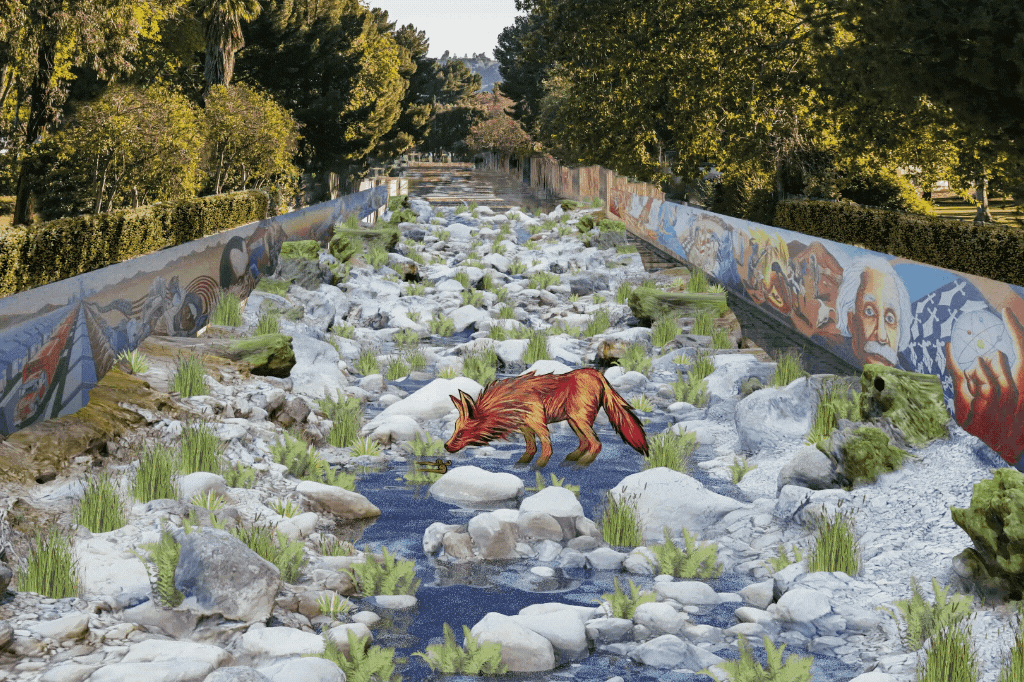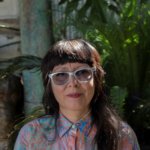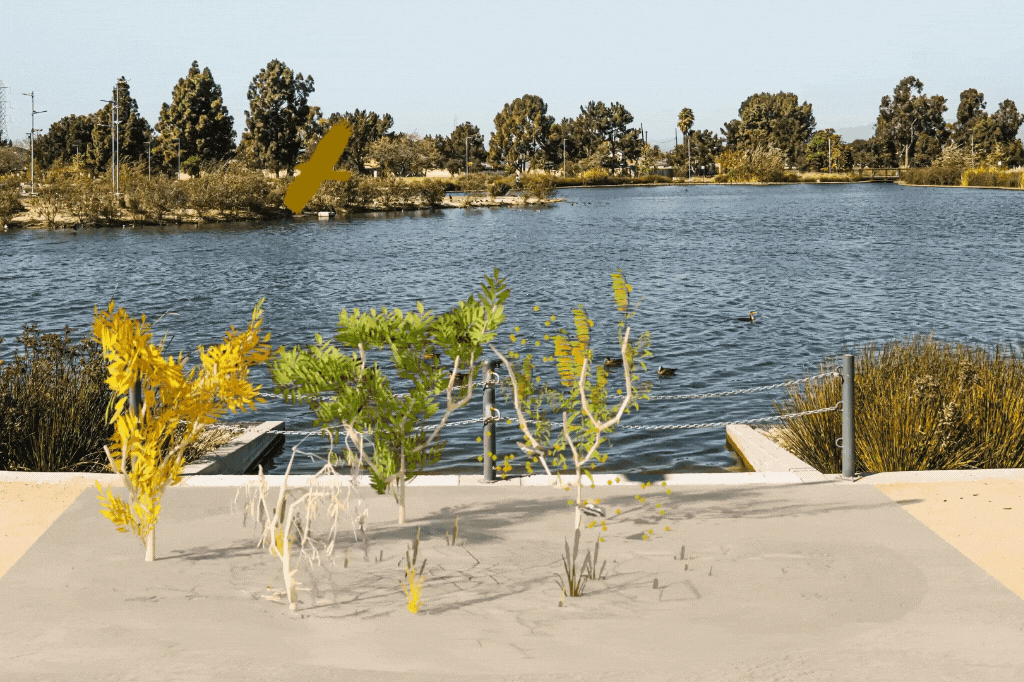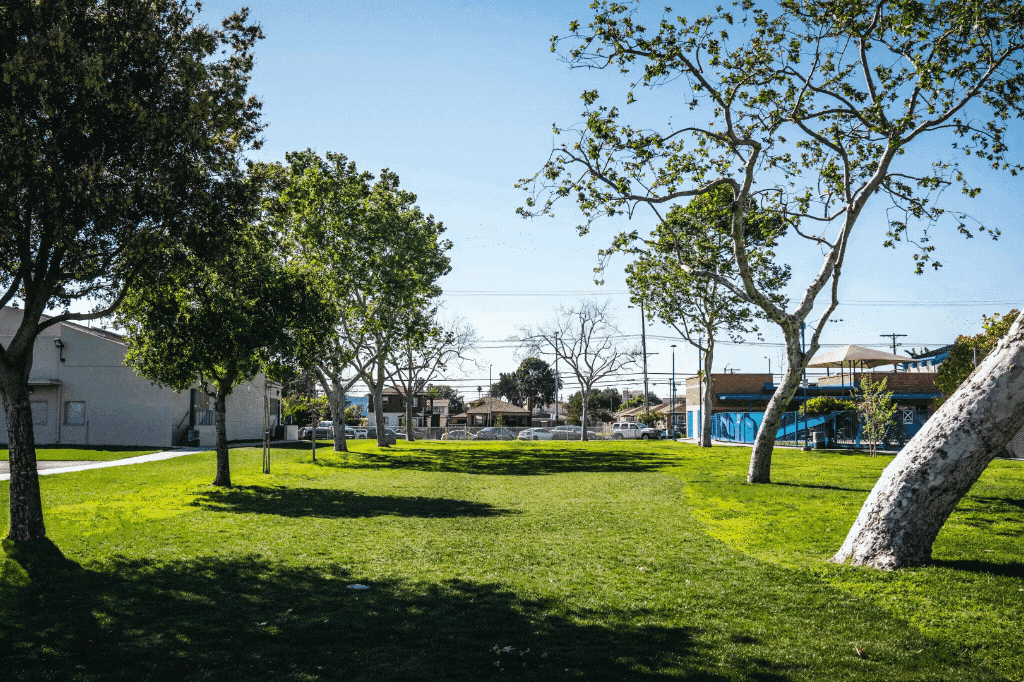Snap, the Mellon Foundation, and the Los Angeles County Museum of Art (LACMA) are back for the second Monumental Perspectives series. This initiative, which kicked off last year, pairs legacy media artists with lens creators, giving them the opportunity to tell new stories in existing public spaces using augmented reality.
“These AR monuments explore the evolution of Los Angeles and communities within it,” said Snap Inc co-founder and CTO, Bobby Murphy. “We’re thrilled to continue working with LACMA to bring awareness to the history of the city, as well as empower artists and Lens creators to educate the world through a new perspective with the help of AR.”
You don’t need to have been around for the first series to appreciate what’s happening this year. But, a little background never hurts.
Making Local Monuments in AR
It feels like a long time ago, but this time last year, America was having trouble with its monuments. Many of those monuments tell stories that either romanticize or ignore oppression while few of those monuments tell the stories of the actual people that lived and built their communities.
“Building new physical monuments takes a great deal of time, but the issues around monuments in America are urgent,” LACMA CEO Michael Govan said at the time. “Utilizing Snap’s advanced augmented reality technology, artists and their virtual artworks mapped to specific places can inspire immediate conversations around real histories.
The first series of Monumental Perspectives went live last year a couple of days before the International Day for Monuments and Sites which is celebrated on April 18. Even though the discourse around monuments has settled down considerably, there are still stories that need to be told. So, Monumental Perspectives returned again this year on April 18.
Monumental Perspectives Return
Monumental perspectives is back for round two. This time, there are three lenses instead of five but the art is just as impactful. Also like last year, the lenses are meant to be experienced in the physical LA County places that inspired them but they can also be experienced anywhere by scanning the Snapchat codes at lacma.org/monumental.
So, let’s look at the monuments:
The River Once Ran

In the 1970s, artist Judy Baca started work on a half-mile-long mural along the Tujunga Flood Control Channel, to which hundreds of artists have since contributed. Officially titled “The History of California,” the mural is more commonly referred to as “The Great Wall of Los Angeles.”
The flood channel began construction after devastating floods displaced many in the early 20th century. While the channel makes populated and developed parts of modern LA County possible, it was at the expense of a natural waterway millions of years old. Baca called her initiative “a tattoo on the scar where the river once ran.”
Using the world-facing camera in an outdoor environment, “The River Once Ran” lens summons rising waters. These are then populated by stylistically rendered plant and animal life in an experience that is both technologically impressive and artistically moving.

You can experience “The River Once Ran” at “The Great Wall of Los Angeles” starting this summer, or from anywhere by scanning the Snapcode here or below.
What the Willow Whispers

The second lens in the series is also closely tied to nature and development in LA County. Compton Creek is the last major tributary of the Los Angeles River. Like the Los Angeles River, Compton Creek has been engineered and re-engineered around and through populated and developed areas of modern LA County.
Artist Sandra de la Loza’s “What the Willow Whispers” brings animated plants and wildlife back to a living river that rises up out of concrete – if only virtually in a scene that changes through the seasons. Visually moving, “What the Willow Whispers” is equally driven by audio created by local musician Carlos Gabriel Niño and others.

You can experience “What the Willow Whispers” at Earvin “Magic” Johnson Park, or from anywhere by scanning the Snapcode here or below.

La Revolución es la Solución!

Where the first two activations in the series deal with development and ecology, the third, titled
“la revolución es la solución!”, deals with social issues. Specifically, it explores the 1991 shooting of 15-year-old Latasha Harlins by a Korean American liquor store owner.
Artist Kang Seung Lee’s lens brings viewers into the not-so-distant past with archival images of the area that bring the world into newsprint greyscale. As the images tear and fly away, the sky is filled with colorful kites, which are used in Korean memorial services. The lens commemorates the event but is also its own step in rebuilding.

You can experience “la revolución es la solución!” at Algin Sutton Recreation Center, or from anywhere by scanning the Snapcode here or below.

More Artistic Narratives from Snap
It’s interesting to think about the second round of Monumental Perspectives in light of Snap’s recent announcement of the Custom Landmarkers Tool. The camera company makes sure that the fruits of projects like Monumental Perspectives are available to everyone, but there’s no substitute for seeing it in the physical location that inspired it.
Geo-located lenses have so far been the exclusive realm of partnerships. While these partnerships will still have a role going forward, we can’t help but be excited for the coming day when any Snap creator can make lenses linked to the places that mean the most to them.
- About
- active
- advanced
- america
- American
- animal
- anywhere
- April
- AR
- AREA
- around
- Art
- artist
- Artists
- audio
- augmented
- Augmented Reality
- available
- awareness
- background
- Block
- border
- celebrated
- ceo
- City
- Co-founder
- colorful
- coming
- commemorates
- Communities
- company
- construction
- continue
- contributed
- control
- conversations
- county
- Couple
- created
- creator
- creators
- Creek
- CTO
- custom
- day
- deal
- Deals
- developed
- Development
- Display
- down
- driven
- Early
- educate
- empower
- Environment
- Event
- everyone
- evolution
- Exclusive
- existing
- experience
- experienced
- explore
- First
- Forward
- Foundation
- Giving
- going
- great
- having
- help
- history
- HTTPS
- Hundreds
- immediate
- impactful
- Initiative
- inspired
- issues
- IT
- Johnson
- Korean
- Legacy
- light
- little
- local
- location
- Long
- Los Angeles
- major
- MAKES
- Media
- millions
- monuments
- more
- most
- moving
- Museum
- Natural
- Nature
- Opportunity
- own
- owner
- Park
- partners
- partnerships
- People
- perspective
- perspectives
- physical
- possible
- projects
- public
- Reality
- realm
- round
- Said
- scanning
- Series
- Services
- shooting
- Snap
- snapchat
- So
- Social
- social issues
- spaces
- specifically
- started
- store
- Stories
- summer
- Technology
- the world
- thrilled
- Through
- Tied
- time
- transition
- trouble
- Virtual
- What
- while
- within
- Work
- working
- world
- year
- years













